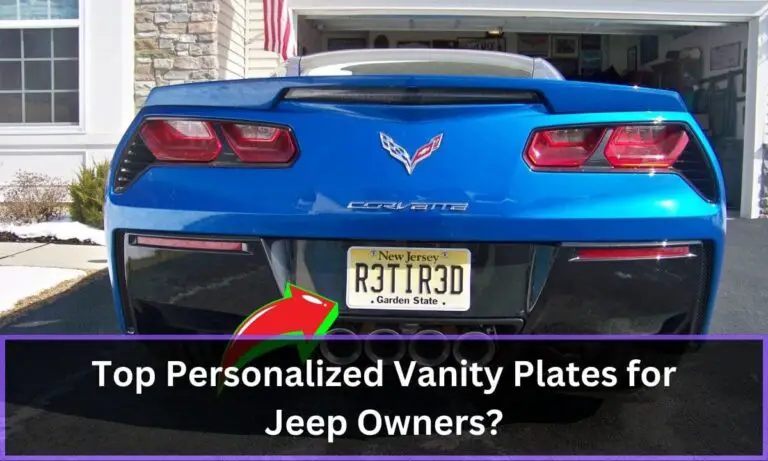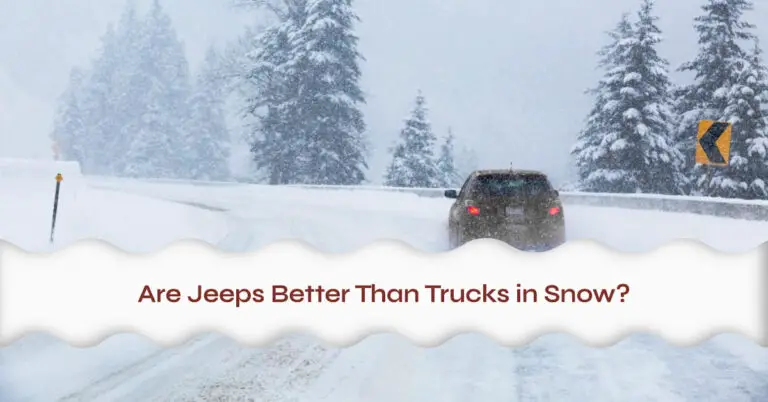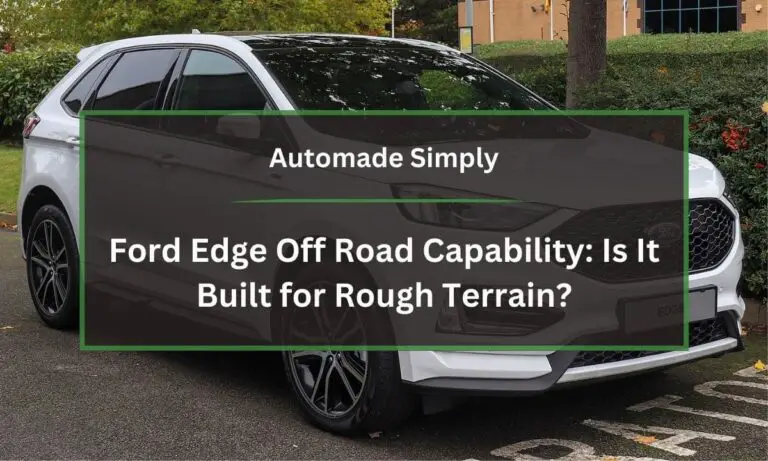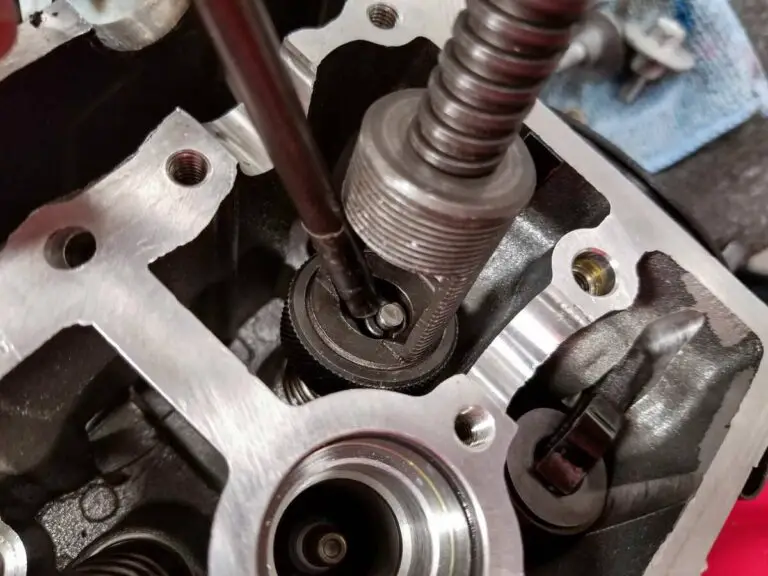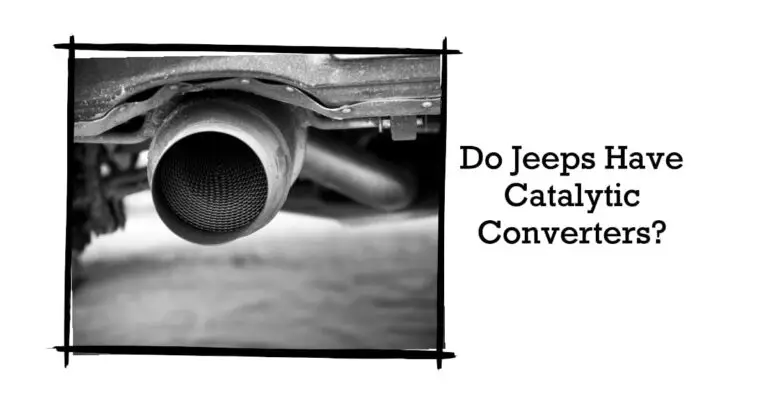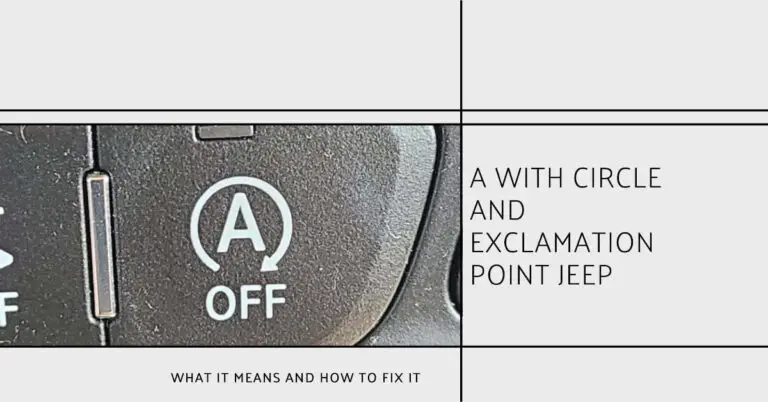SUV vs Jeep: Pros and Cons Comparison
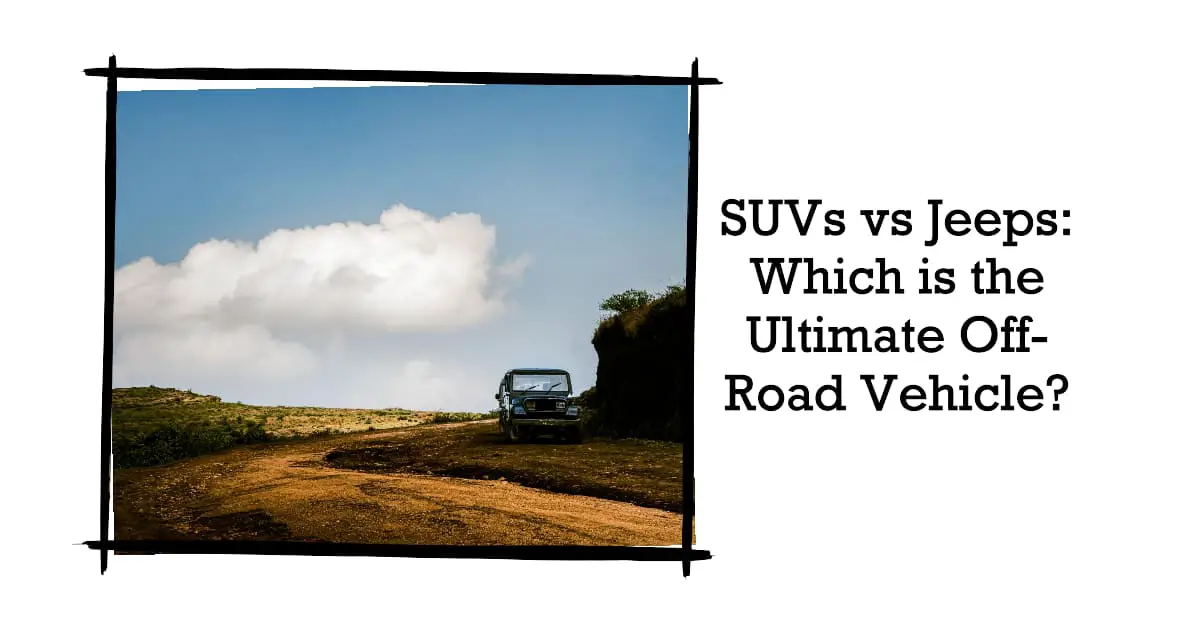
When shopping for a new vehicle, two popular options often come up that spark debate – the SUV and the Jeep. Should you get an SUV or a Jeep? While there is certainly crossover between the two vehicle classes, there are notable differences that set them apart in terms of capability, performance, comfort and more. This comprehensive guide will dive into all the key factors, answering whether an SUV or Jeep better fits your driving priorities.
We’ll compare SUVs and Jeeps across various categories to help you determine:
- Key differences in ride, handling, performance and drivetrain
- Off-road traits like ground clearance, 4WD systems, and durability
- Passenger and cargo space considerations
- Safety ratings, tech features and interior comfort contrasts
- Cost differences between comparable models
By the end, you’ll have the knowledge to decide if your needs align more closely with the legendarily rugged Jeep or the smoother riding, car-like SUV. Let’s get to it!
Table of Contents
Key Differences at a Glance
Before jumping into the details, here is a high-level specs table contrasting some of the main differences between SUVs and Jeeps:
| Category | SUV | Jeep |
|---|---|---|
| Intended Use | All-purpose vehicle good for most daily driving scenarios | Specialized for off-road adventures while still street legal |
| Ride Comfort | Prioritizes passenger comfort with smooth, car-like ride | Stiffer suspension allows flexing over rugged terrain at the cost of worse on-road comfort |
| Handling/Performance | Designed to handle well at highway speeds | Iconic four-wheel drive traction optimized for low-speed off-road maneuvers rather than on-road performance |
| Drivetrain/Capabilities | Available all-wheel or front-wheel drive sufficient for light off-roading. Less specialized for extreme conditions | Signature four-wheel drive systems engineered specifically for high-capability traction in uneven terrain, mud, rocks, inclines |
| Ground Clearance | Around 6-8 inches depending on model and options | 10+ inches standard. Can be further lifted |
| Towing Capacity | Up to 5,000 lbs for mid-size SUV. Full-size can tow over 8,000 lbs | Best-in-class towing over 7,000 lbs |
| Passenger Space | Available with second and optional third row seating | Typically seats 5 max |
| Cargo Capacity | Abundant cargo room, especially in larger models | More limited rear storage after folding second row |
Now let’s explore each of these differences in more detail…
What’s Better: SUV or Jeep? Key Performance & Capability Contrasts
One key debate for vehicle shoppers is deciding whether a Jeep or SUV better aligns with their priorities regarding performance, handling, off-road capability, and overall drivetrain.
Ride Quality and Handling Dynamics
When it comes to daily driving comfort and ride feel, SUVs tend to shine while iconic Jeeps lag behind.
How is the ride quality and driving performance?
- SUVs prioritize passenger comfort with car-like suspension calibrated for a smooth, quiet ride. Family-oriented models cushion bumps exceptionally well. Performance variants sport tighter dynamics for enthusiastic driving. Most strike an agreeable balance suitable for long road trips or daily commutes.
- On the contrary, the stiff suspensions of Jeeps allow axles to articulate but take away from on-road composure. Solid-axle Wranglers are especially rough, bouncing occupants mercilessly over small ruts. Even more refined Grand Cherokee models trade comfort for enhanced heavy-duty off-road dexterity. The rugged ride quality imparts adventurous character at the cost of worse passenger isolation.
Which option generally handles better steering and cornering on pavement?
- When kept to legal speeds, SUVs provide confident and nimble handling akin to passenger cars, easing navigation through congested city centers and fast highway merges. Available all-wheel drive on some models further bolsters grip. Performance-tuned variants can attack curvy backroads with sports car-like composure.
- In contrast, Jeeps prioritize rock crawling mastery over on-road manners. Slow steering ratios hamper responsiveness while soft suspensions allow for greater wheel articulation over obstacles at low speeds– but flop through corners on pavement at higher velocity. Capable four-wheel drive traction keeps them on course in slippery conditions, though most Jeeps feel unwieldy above 50 mph, especially the rugged Wrangler.
Which vehicle type offers better traction capabilities once you go off-road?
- When taking the path less traveled, Jeeps utterly dominate as four-wheeling icons engineered specifically for extreme off-road conditions. Short overhangs, bespoke 4WD systems and ample ride height supply tenacious slow-speed grip across mud, sand, rocks, and steep grades. No mainstream vehicle can match their steady-footed crawling competence. Several available options like locking differentials and sway bar disconnects further expand ruggedness.
- By comparison, mainstream SUVs favor tame dirt trails and gravel paths better suited to their roadway priorities. Available all-wheel drive paired with modest ground clearance (typically 7-9 inches) permits light off-roading for camping or overlanding trips – but most lack the components to safely traverse rocky terrain and other obstacles at slow speeds while outdistancing sedans. Only a select few mid-size SUVs (like the Jeep Grand Cherokee) offer more robust four-wheel drive setups on higher trims.
Off-Road Capability and Overall Durability
Evaluating the durability, ground clearance, 4WD systems and general off-road traits reveal a vast gulf between family-hauling SUVs and conquest-hungry Jeeps.
Can both vehicle classes safely go off-road or is one better equipped?
- Engineered as off-roading specialists, all Jeep models satisfy trailblazers with a thirst for adventure. There are several key areas that set them apart:
- Enhanced ground clearance over 10 inches allows wheels to avoid obstacles and axles to flex freely. Further lift kits available.
- All-terrain stock tires with aggressive tread patterns. Beadlock-capable wheels on Wranglers.
- Heavy-duty suspension components and skid plates protect vulnerable hardware from impacts.
- Superior approach/departure angles let Jeeps crest steep hills without scraping bumpers.
- Advanced 4WD systems have low range gears, deliver power smoothly over loose terrain and can lock the rear differential on some models.
- Overall, Jeeps are built to withstand harsh terrain or accidents while miles into the wilderness better than any comparably priced vehicle.
- As road-biased crossover wagons engineered for the daily commute, most mainstream SUVs offer mild off-road pretensions at best unless choosing one of the few models specifically outfitted for rough travel from the factory. While optional all-wheel drive and slightly elevated ride heights permit smoothly graded dirt roads and well-kept trails, most lack the capability for extreme rock crawling or mudding. Care is required to avoid paint damage or sticking. Choices like the Ford Bronco and Jeep Grand Cherokee do provide credible four-wheel drive alternatives combining better on-road refinement with legit light off-road chops.
Which vehicle lineup typically has greater durability and longevity?
As expected given their rugged character, Jeeps achieve superior durability over mass market SUVs – with caveats. In total cost of ownership, though, differences diminish:
- Jeeps are built to operate far from civilization while crawling over boulders or fording streams. Robust solid axles, heavy-duty parts like balljoints, protective armor and ample skid plating greatly improve resilience when tackling potentially damaging obstacles. This comes at the tradeoff of worse on-road comfort and refinement.
- By embracing creature comforts and optimized handling dynamics befitting their popular roles as family transport, mainstream SUVs favor lighter components that prioritize efficiency over maximum longevity. Though modern unibody techniques bring robustness close to body-on-frame SUVs, most remain ill-equipped for extreme rock crawling or conditions likely to damage running gear.
- When used as mixed-purpose vehicles, Jeeps counter their hard-wearing edge off-road with higher ownership costs stemming from inferior reliability surveys, worse fuel mileage and pricier insurance premiums. Over time, total cost differences between Jeep and reliable car-based SUVs like the Toyota RAV4 narrow substantially for many buyers.
Interior Space & Amenities: Passenger Comfort and Cargo Considerations
Those less enthused by rugged trails rightfully weigh aspects like seating configurations, trunk volume, interior quality and available technology when choosing between SUVs and Jeeps.
Which vehicle type offers a more comfortable and well-appointed passenger cabin?
- Overall, mainstream SUVs cater better to passengers seeking space and luxury accommodations mirroring a car experience. Quality interiors focused on low noise levels, available ventilation and heating for all seating rows, charging points and cupholders aim to pamper rather than punish fragile human cargo whether climbing mountain switchbacks or stuck in traffic.
- Although improving, most Jeeps still utilize hard plastics and basic features with function prioritized over form. Entry-level Wranglers remain noisy and feature-sparse once adherence to open-air adventuring compromises weather protection. Higher-end trims close the luxury and comfort gap somewhat with leather upholstery, heated seats and better insulation for Grand Cherokee and Gladiator models. Still, suppression of wind roar and suspension impacts remain worse than cushier SUV counterparts overall.
Are infotainment systems, advanced driving aids and interior technology similar between classes?
- Thanks to rising customer expectations, SUVs offer excellent standard entertainment and convenience amenities on par with dedicated passenger cars, including wireless connectivity, WiFi hotspots, multi-zone climate control, available ventilated seats and expansive touchscreens hosting modern interfaces. Sophisticated driver assistance systems provide confidence and security for non-enthusiasts.
- Reflecting rugged priorities, base Jeeps feel sparse and outdated on tech features until adding comprehensive packages on Limited models and above. The Wrangler only recently adopted conveniences like blind spot awareness, albeit hampered by roll cage limitations. Grand Cherokee variants bridge expectations better with high-resolution displays, digital gauge clusters, online connectivity and multi-terrain management modes that tweak traction control for different surfaces.
Safety Considerations: Crash Test Ratings
As family transport or daily drivers, SUVs generally achieve higher safety marks though standards continue improving across segments:
Between SUVs and Jeeps, which vehicle type usually earns better safety ratings?
- The insurance industry crash tests and independent studies assess passenger welfare better for most popular SUVs, aided by sophisticated chassis engineering and abundant airbags. Five-star results have become expected amongst high volume sellers like the Honda CR-V, Toyota RAV4 and Subaru Forester.
- Reflecting core priorities of adventuring far from urban trauma centers, safety took a backseat for Jeeps until recent initiatives upgraded impact absorption and rollover characteristics. Still, long wheelbases paired with higher centers of gravity make body roll more apparent during sudden maneuvers. Removable doors and roofs also require careful attention to avoid ejections when off-road. Only the Cherokee and Grand Cherokee score well amongst modern expectations now while the rugged Wrangler and Gladiator lag behind crossover contemporaries.
Cargo Space and Passenger Seating Capacities
Hauling gear often factors into purchase decisions. We contrast luggage room and occupant seating differences:
How does the cargo capacity compare between Jeeps and mainstream SUV models?
- Favored for family vehicle duties, mid-size and full-size SUV models excel for luggage potential with fold-flat second (and third) row seating creating vast, flat load floors. Small crossovers still transport ample groceries and travel bags for weekly errands, aided by smart storage cubbies. With all seats down, a cavernous interior easily welcomes camping gear, outdoor toys or bulky DIY project materials at Costco.
- Much to the frustration of overlanders, Jeeps offer relatively limited cargo potential behind rear benches once affirmative traction hardware consumes space. Accessible volume shrinks further upon adding inflexible steel doors, roll bars or storage lockers. Smaller models like the Renegade fare better than two-door Wranglers but none match the carrying capabilities of comparably sized SUVs. Remove the second row and longer items fit but reaching third row fold-flat nirvana remains exclusive to a select few Grand Cherokee variants.
How many passengers can each vehicle type transport comfortably?
- Available with five-, seven- or even eight-passenger seating, SUVs easily accommodate larger families or carpools. Two parents up front enjoy generous room while kid gangs appreciate the extra doors and optional third row in larger configurations. Removing unneeded chairs expands cargo flexibility.
- The iconic Jeep layout caps comfortable seating at five in practice; rear quarters in four-door Wranglers and two-seat Gladiators remain quite cramped. At most, children tolerate the bare rear benches for short trips. Two passengers travel happily in old-school two-door models. Overall the wieldy size that aids off-road agility certainly compromises passenger capacity next to more expansive SUVs.
Cost Considerations: SUV vs Jeep MSRP and Ownership Price Differences
Value becomes vital when allocating hard-earned income towards modern transportation appliances. How do MSRPs and total long-term costs compare?
Is there typically a price difference between new SUV and Jeep models of similar size and capability?
- Due to higher production scale, mainstream SUVs benefit from greater manufacturing efficiency and economies of scale, passing substantial cost savings to customers. For example, a Ford Escape Titanium AWD rings up around $37,000 compared to $41,000 for a roughly equivalent mid-size Jeep Grand Cherokee Laredo E 4×4. Expanding the consideration set to include affordable options like the capable AWD Subaru Forester Touring lowers realistic pricing further.
- Dedicated off-road DNA incurs a premium – new Jeeps command steep prices once upgrading to more specialized four-wheel drive hardware and rugged components not found on road-focused SUVs. Still, strong resale value and fan following help offset higher initial buy-in and yearly insurance costs. Leasing helps manage expenses.
How do long-term ownership costs compare?
Factoring five-year total cost reveals less disparity but Jeeps lose ground, as expected given their enthusiast appeal:
- From reliability surveys, real-world mileage reports and repair statistics, mainstream SUVs like the CR-V, RAV4 and Escape suffer fewer mechanical issues with longer service intervals that reduce maintenance costs. Good resale value offsets average depreciation across years of hassle-free operation.
- Rugged construction comes at the cost of efficiency – Jeeps guzzle more gas during urban commutes or highway trips without benefiting from latest engine advancements. Costlier brake and tire replacements reflect hardcore priorities as well. Problematic electronics and average reliability surveys suggest higher repair bills accrue over years of ownership despite easy wrenching access and sturdy engine assemblies. Still, Wranglers and Grand Cherokees command great resale percentages, defying typical depreciation.
Key Pros and Cons: Quick Comparison Overview
Pros of Buying a Jeep:
- Legendary off-roading capability and prowess
- Fun, adventure-ready character for exploring
- Rugged styling options for personalization
- Strong towing capacities over 7,000 lbs
Cons of Buying a Jeep:
- Less comfortable daily driver overall
- Worse gas mileage compared to SUVs
- More expensive initial purchase price
- Technology often outdated on base models
Pros of Buying a Mainstream SUV:
- Smoother, quieter ride quality
- Confident road handling and performance
- Available third row and maximum cargo flexibility
- Lower cost model options
Cons of Buying a Mainstream SUV:
- Most lack extreme off-roading chops
- Less powerful engine options than Jeep
- Towing capacity often substantially lower
Bottom Line: Key Factors To Consider When Deciding SUV or Jeep
Ultimately, your ideal blend of priorities dictates choosing one camp over the other. Reflect on these key questions:
Do you plan to regularly go off-roading or overland? Choose a Jeep over a road-focused SUV. No other mainstream brand matches their off-road mastery. Upgrade to options like locking differentials and skid plates.
Do you need 3 rows of seating or maximum cargo capacity? Favor a mid-size/full-size SUV over cramped Jeep quarters to transport family or gear. Choose Grand Cherokee if insisting on Jeep brand.
Is a comfortable, tech-rich daily driving experience most important? Mainstream SUVs prioritize plush interiors, advanced safety systems and the latest infotainment expected nowadays.
Does adventure-ready character and head-turning style appeal to you? The iconic seven slot grille screams freedom from the mundane. Customize a Jeep to stand out from suburban crowd.
Is value purchasing vital to stretching dollars? mainstream SUVs like the CR-V and RAV4 offer better fuel efficiency, more reliability and lower MSRPs.
Americans buy nearly 5 million new SUVs annually but a select hardcore bunch requires specialized off-road talent only Jeeps provide. Determining your needs and priorities simplifies choosing between these rugged traditionalists and more genteel SUV counterparts.
Hopefully this detailed guide gave you clarity whether family-friendly functionality tops your list or conquering boulders and desert whoops sounds more enticing. Whatever adventure awaits, safe travels!

